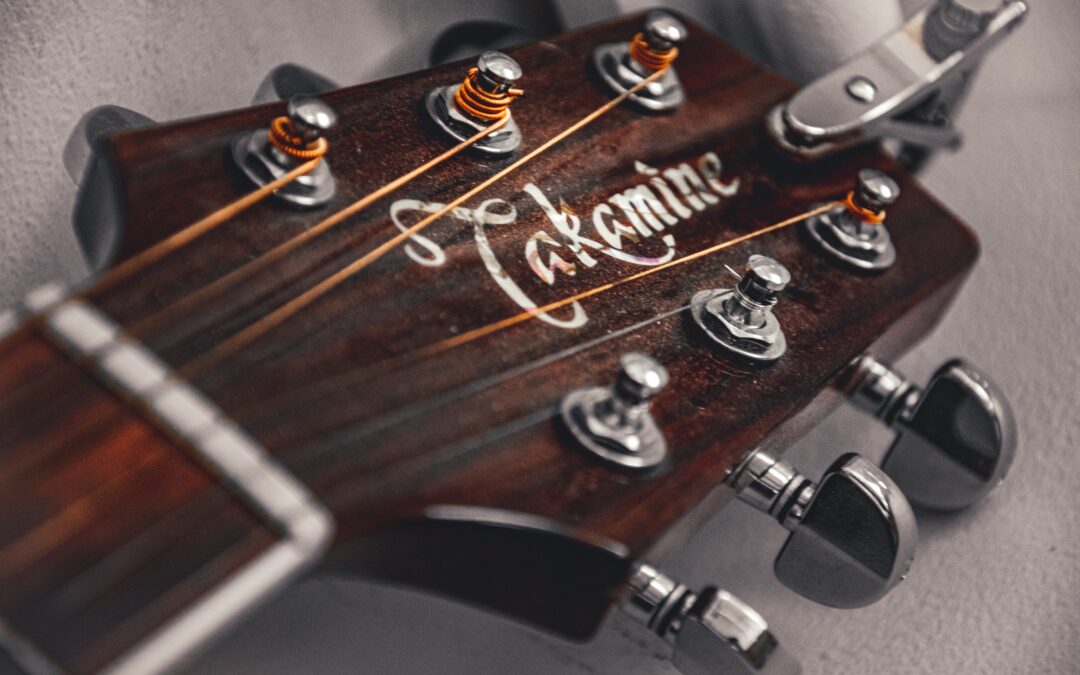If you want to play the guitar, you’ll need to maintain your equipment. Keep new strings on hand, and always keep your guitar tunes. Image accompanying a vocalist, only to realize that the song is either too high or low for them because you’re out of tune! This is not uncommon.
Keep reading for a guide on guitar tuning. And if you would like to work with an experienced guitar teacher in Brooklyn, get in touch.
Standard Guitar Tuning
The most common tuning for a guitar is called standard tuning. This tuning is used in countless songs across nearly every genre. In standard tuning, the strings are tuned to the following notes, from the thickest (lowest) to the thinnest (highest): E, A, D, G, B, and E. The two E strings are an octave apart, while the other strings fill in the notes in between.
Once you have a refernce pitch, you can really tune the rest of the strings by ear. Here’s how to get that reference pitch:
Use a Tuner
The simplest and most accurate way to tune your guitar is by using a tuner. Tuners come in various forms—clip-on tuners, pedal tuners, and even tuning apps on your phone. The process is straightforward: pluck a string and watch the tuner read the pitch. Adjust the tuning peg until the string matches the desired note. You can also use your ear to match the note. Just play an E on the piano, or use your phone, then match the string by turning the knob.
Clip-on tuners are popular because they attach to the headstock of your guitar and pick up the vibrations directly from the instrument. This makes them handy for tuning in noisy environments, as they won’t pick up background sounds. Pedal tuners are another great option for live performances, where you can quickly tune between songs without having to unplug your guitar.
Tuning apps are convenient, especially when you’re on the go and don’t have a physical tuner with you. Many apps even feature different tuning modes, so you can explore alternative tunings beyond standard tuning.
Can You Tune Your Guitar by Ear?
Yes, as long as you have a reliable reference note, you can tune by ear. You can get this from a tuning fork, another instrument, or even a tuning app (as mentioned above).
Once you have a reference pitch for one string—usually the low E—you can tune the other strings based on that note. Play the reference note and adjust the low E string until it matches. Once the low E is in tune, use it as a guide to tune the other strings.
One of the most common methods is the fifth fret method. To do this, place your finger on the fifth fret of the low E string. This note is an A. Pluck the low E string while playing the open A string, then adjust the A string until both notes sound the same. Repeat this process for each string: fifth fret of the A string matches the open D string, fifth fret of the D string matches the open G string, and so on.
The only exception is the B string, which is tuned to match the fourth fret of the G string rather than the fifth. Once you’ve tuned all six strings, play an open chord to check if the guitar sounds in tune. If something sounds off, make small adjustments until everything sounds right.
Alternate Tunings
While standard tuning is the go-to for most players, exploring alternate tunings opens up new possibilities for your sound. Some popular alternate tunings include Drop D (where the low E string is tuned down to a D) and Open G (where the strings are tuned to form a G chord when played open). These tunings are common in rock, blues, and folk music and give you access to new chord shapes and textures.
To switch to Drop D, lower the pitch of your low E string to a D. You can use your tuner or compare the low E string to the D string to find the right pitch. For Open G, you’ll need to adjust several strings: tune the low E down to D, the A string down to G, and the high E string down to D. The result is a rich, open chord sound that’s perfect for slide guitar and fingerpicking styles.
Experimenting with alternate tunings can spark creativity and lead to new musical ideas. Just remember to retune your guitar back to standard tuning when you’re done!
Keep Your Guitar in Tune
Once your guitar is in tune, staying in tune is just as important. The strings, your climate environment, and playing style are all working against you. Fresh strings tend to stretch and settle in during the first few hours of playing, so you may need to retune a few times when using new strings.
Temperature and humidity also play a role in tuning stability. Guitars are sensitive to changes in climate, and shifts in humidity can cause the wood to expand or contract, affecting the tension of the strings. To avoid frequent tuning issues, try to store your guitar in a stable environment, away from extreme heat or cold.
When playing, avoid bending the strings excessively if you want to maintain tuning stability. Heavy string bends can cause the strings to go sharp or flat, especially if they haven’t fully settled. Some guitarists also use locking tuners or graphite nuts to help keep the strings in place and prevent slipping.
It’s All Part of Being a Musician
Whether you play the piano, guitar, or trombone, tuning matters! You’ll need to develop your ear and learn how to tune notes relative to each other if you want to play at a high level.


Recent Comments